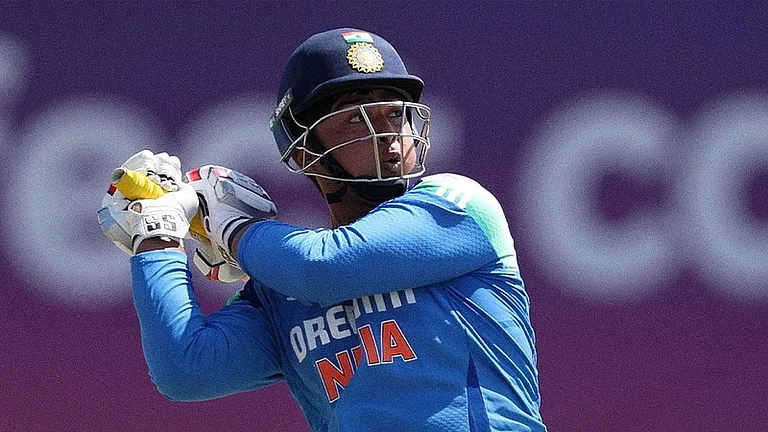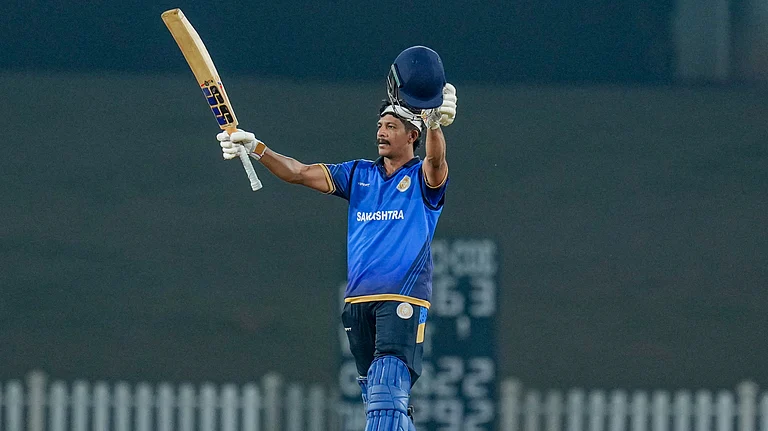Daman and Diu for #NaidaCaves
Sharing space with the glorious Diu Fort, Naida Caves are worth stumbling upon. The origin of the caves are a bit of a mystery, some believing it to be a natural wonder, while others consider it a man-made structure. The latter suggests that these caves were carved out by the Portuguese who used the rubble and sand to build the adjoining Diu Fort. The labyrinth of tunnels inside the caves are yet to be fully explored, but signs and steps have been placed inside for tourists looking to wander about. The tunnels open to caves of different sizes, some with holes in the roof that lets sunlight filter in. The caves demand a visit by photographers and adventurers alike.
Dadra and Nagar Haveli for #Waterbodies
Sandwiched between Gujarat and Maharashtra, Dadra and Nagar Haveli have dense jungles, mountains, rivers and valleys. Near Silvassa, Vanganga Lake Garden is unique. It has a beautiful lake with an island in the centre that connects to the garden by a bridge. Lined with trees, the spectacular fauna and flora is punctured by fountains and scenic lighting. Dudhni Lake, a reservoir of the Madhuban Dam, hosts plenty water activities like kayaking, water scooters, canoes and jet skies. The Madhuban Dam, is in itself quite spectacular and is an extremely popular camping site.
Tamil Nadu for #ThanjavurArt

A state deep-rooted in its rich cultural history, Tamil Nadu is home to an expansive, ever-growing art industry. Scout for Thanjavur paintings or Palaghai Padam, an ornate artwork created on a bed of cloth combined with wood. Going back to the 16th century, these paintings depict Hindu gods and saints amid a plush background of curtains. For a more traditional souvenir, search for artworks with well-rounded bodies and almond eyes. Texture and dimensions are enhanced by embellishing the sketch using semi-precious stones, delicate gold leaves and pieces of glass.
Manipur for #Sports

This state has given the country some of its finest sports people—from Mary Kom to Ngangbam Soniya Chanu. The state’s affinity with sports is unparalleled. Did you know that a version of the modern-day polo originated in Manipur? Sagol Kangjei, as it is traditionally called, has seven players on each side, mounted on ponies, with sticks made of cane and balls made of bamboo roots. From the warriors of this erstwhile kingdom, came Thang Ta and Sarit Sarak, a form of skillful martial arts. The state is also known for hockey (Khong Kangjei), rugby (Yubi Lakpi) and wrestling (Mukna). These indigenous games are extremely popular amongst the youth, with several sports centres and festivals being set up to encourage them.
Haryana for #IndusValley
Haryana’s wrestled away a sizeable chunk of Pakistan’s archaeological fanfare, with its enviable collection of Indus Valley sites. Step back into antiquity with visits to the ancient settlements of Sisai, Kunal, Binawali and Siswal. Of particular interest are the villages of Rakhigarhi and Bhirrana—their 9,000-year-old ruins, peppered with granaries, seals and terracotta figurines, pre-date Harappa. A fragment discovered at Bhirrana even bears remarkable artistic similarities to the legendary Dancing Girl, suggesting the craftsman had first-hand knowledge of the figurine.
Gujarat for #Architecture
Run your palms across the ornate sculptures, carvings and fortifications that define Gujarat’s eclectic architectural persona. A refined mix of Jain, Hindu and Muslim styles, travellers can enjoy the state’s iconic stepwell creations at Rani ki Vav, or beside the Sun Temple at Modhera. Catch the spiral silhouettes of Mahabat Maqbara at a sunset in Junagadh, or climb (read: heave) the 3,500 steps to reach the main temple of the Jain Palitana complex. The temple cluster, one of the largest in the world, is a principal pilgrimage spot for the Jain community. If pressed for time, make a beeline for the Champaner-Pavagadh Archaeological Park—a Unesco World Heritage Site, it features palaces, mosques, tombs, archways, chalcolithic sites and much more.
Jharkhand for #Sarnaism
Sarnaism is one of the largest faiths you’ve never heard of. Based in animist philosophy, the religion is rooted around the worship of trees. If you want to retire the usual tourist trail for a more incisive look into India, we suggest a trip during the Sarna festival of Karam. It’s a monsoon celebration dedicated to power and youthfulness. Observed between August and September, the festival sees villagers sing, feast, and share legends—try and spot the yellow forest blooms tucked behind their ears. Alternatively, you could enjoy the colours of spring with a stay during Sarhul. One of Jharkhand’s most prominent fêtes, it’s celebrated with vibrant dances, tribal cuisine, and intricate headgear. Enjoy the intense flavours of fish sukha (dried), or grab a handful of the foraged bhardo, bihidien and rugda mushrooms that appear at this time.





















